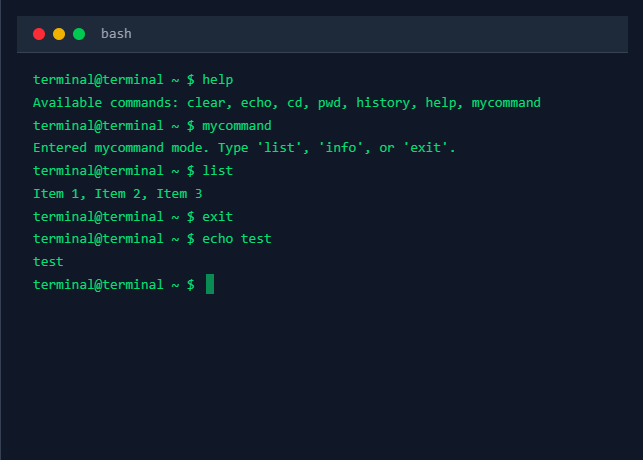Still Using Redux Everywhere? How an Event Bus Could Transform Your React Workflow
Modern React developers often reach for state management libraries (Redux, Zustand, Recoil, etc.) by default to handle shared state. However, using these state managers everywhere can introduce unnecessary complexity and boilerplate into your apps. In many cases, an event-driven architecture can be a simpler, more flexible solution. In this article, we’ll explore the pitfalls of overusing state managers, discuss the event-driven alternative, introduce react-eventizer as a powerful event bus for React, and walk through real-world examples with code. We’ll also cover best practices and when to choose events vs. state managers. Let’s dive in! The Pitfalls of Overusing State Managers State management libraries like Redux, Zustand, and Recoil are powerful tools for complex apps. They provide a centralized store and fancy features (time-travel debugging, middleware, etc.), but they come at a cost. Introducing Redux or similar libraries in every situation can be overkill for small to medium apps, adding unnecessary overhead. Redux in particular often requires a lot of boilerplate (actions, reducers, providers) which can make code harder to understand and maintain. Even “lighter” solutions like Zustand or Recoil, while simpler, still add an extra layer of abstraction that you might not need for straightforward cases. Another common issue is prop drilling and tangled callback chains in deep component hierarchies. In a typical React app, data flows down through props and events bubble up through callback props. In a simple component tree this is fine, but as your app grows, passing props through multiple layers (just to get data to a distant component) and wiring callbacks back up becomes cumbersome. You end up with intermediate components that exist only to shuttle data around, making the code harder to follow and maintain. This tight coupling of components increases cognitive load and brittleness in your codebase. Prop drilling forces passing props (green arrows) down many layers, and bubbling callbacks (red arrows) up through intermediaries, which can tangle your component architecture. To avoid prop drilling hell, many developers instinctively turn to a global state solution (Context API, Zustand, Redux, etc.) so components can share data without explicit prop passing ([Event-Driven Architecture for Clean React Component Communication - DEV Community]. While this can solve one problem, overusing global state introduces new complexity – you might be maintaining a giant store or context for things that could be handled more simply. So is there a middle ground? Event-driven architecture offers a compelling alternative for many scenarios. The Event-Driven Alternative: Loosely Coupled Components Event-driven architecture in React allows components to communicate through a publish/subscribe (pub-sub) pattern rather than via shared state or direct parent-child links. In essence, components can emit events (publish) and listen for events (subscribe) using a central event bus, without needing to know about each other’s existence. This decouples your components, making the app architecture more modular and easier to maintain. In an event-driven approach, when something happens in one component, it can broadcast an event into a central channel. Any other component interested in that event can react to it, regardless of where it sits in the component tree. This means no more drilling props down or lifting state up just to get two distant components talking – the event bus handles that communication in a transparent, global way. Event-driven communication: sub-components dispatch events to a central events handler (blue arrows), which notifies any listening components. This eliminates the need to thread callbacks up through every intermediate parent. Because components remain unaware of who is listening or emitting, this pattern promotes loose coupling. Your components become more self-contained: they just announce what happened (e.g. “item X was deleted”) or respond to announcements (“someone deleted an item, I should update my list”) without tight integrations. The result is often simpler code flow – especially for cross-cutting concerns like global notifications, logging, or syncing data – and potentially fewer lines of code than an equivalent Redux setup. In fact, an event bus can bring clarity to a large codebase by centralizing how events are handled. Meet react-eventizer: An Event Bus for React So how can we implement an event-driven architecture in React? react-eventizer is a lightweight library that provides exactly this: a React-friendly event bus system. According to its documentation, react-eventizer is a “lightweight, zero-dependency React event bus with full TypeScript support” that enables decoupled component communication using a pub/sub model. In simpler terms, it lets you set up a global event hub in your React app, with minimal code. Key features of react-event

Modern React developers often reach for state management libraries (Redux, Zustand, Recoil, etc.) by default to handle shared state. However, using these state managers everywhere can introduce unnecessary complexity and boilerplate into your apps. In many cases, an event-driven architecture can be a simpler, more flexible solution. In this article, we’ll explore the pitfalls of overusing state managers, discuss the event-driven alternative, introduce react-eventizer as a powerful event bus for React, and walk through real-world examples with code. We’ll also cover best practices and when to choose events vs. state managers. Let’s dive in!
The Pitfalls of Overusing State Managers
State management libraries like Redux, Zustand, and Recoil are powerful tools for complex apps. They provide a centralized store and fancy features (time-travel debugging, middleware, etc.), but they come at a cost. Introducing Redux or similar libraries in every situation can be overkill for small to medium apps, adding unnecessary overhead. Redux in particular often requires a lot of boilerplate (actions, reducers, providers) which can make code harder to understand and maintain. Even “lighter” solutions like Zustand or Recoil, while simpler, still add an extra layer of abstraction that you might not need for straightforward cases.
Another common issue is prop drilling and tangled callback chains in deep component hierarchies. In a typical React app, data flows down through props and events bubble up through callback props. In a simple component tree this is fine, but as your app grows, passing props through multiple layers (just to get data to a distant component) and wiring callbacks back up becomes cumbersome. You end up with intermediate components that exist only to shuttle data around, making the code harder to follow and maintain. This tight coupling of components increases cognitive load and brittleness in your codebase.
 Prop drilling forces passing props (green arrows) down many layers, and bubbling callbacks (red arrows) up through intermediaries, which can tangle your component architecture.
Prop drilling forces passing props (green arrows) down many layers, and bubbling callbacks (red arrows) up through intermediaries, which can tangle your component architecture.
To avoid prop drilling hell, many developers instinctively turn to a global state solution (Context API, Zustand, Redux, etc.) so components can share data without explicit prop passing ([Event-Driven Architecture for Clean React Component Communication - DEV Community]. While this can solve one problem, overusing global state introduces new complexity – you might be maintaining a giant store or context for things that could be handled more simply. So is there a middle ground? Event-driven architecture offers a compelling alternative for many scenarios.
The Event-Driven Alternative: Loosely Coupled Components
Event-driven architecture in React allows components to communicate through a publish/subscribe (pub-sub) pattern rather than via shared state or direct parent-child links. In essence, components can emit events (publish) and listen for events (subscribe) using a central event bus, without needing to know about each other’s existence. This decouples your components, making the app architecture more modular and easier to maintain.
In an event-driven approach, when something happens in one component, it can broadcast an event into a central channel. Any other component interested in that event can react to it, regardless of where it sits in the component tree. This means no more drilling props down or lifting state up just to get two distant components talking – the event bus handles that communication in a transparent, global way.
 Event-driven communication: sub-components dispatch events to a central events handler (blue arrows), which notifies any listening components. This eliminates the need to thread callbacks up through every intermediate parent.
Event-driven communication: sub-components dispatch events to a central events handler (blue arrows), which notifies any listening components. This eliminates the need to thread callbacks up through every intermediate parent.
Because components remain unaware of who is listening or emitting, this pattern promotes loose coupling. Your components become more self-contained: they just announce what happened (e.g. “item X was deleted”) or respond to announcements (“someone deleted an item, I should update my list”) without tight integrations. The result is often simpler code flow – especially for cross-cutting concerns like global notifications, logging, or syncing data – and potentially fewer lines of code than an equivalent Redux setup. In fact, an event bus can bring clarity to a large codebase by centralizing how events are handled.
Meet react-eventizer: An Event Bus for React
So how can we implement an event-driven architecture in React? react-eventizer is a lightweight library that provides exactly this: a React-friendly event bus system. According to its documentation, react-eventizer is a “lightweight, zero-dependency React event bus with full TypeScript support” that enables decoupled component communication using a pub/sub model. In simpler terms, it lets you set up a global event hub in your React app, with minimal code.
Key features of react-eventizer:









































































































































































![[The AI Show Episode 142]: ChatGPT’s New Image Generator, Studio Ghibli Craze and Backlash, Gemini 2.5, OpenAI Academy, 4o Updates, Vibe Marketing & xAI Acquires X](https://www.marketingaiinstitute.com/hubfs/ep%20142%20cover.png)


























































































































![[FREE EBOOKS] The Kubernetes Bible, The Ultimate Linux Shell Scripting Guide & Four More Best Selling Titles](https://www.javacodegeeks.com/wp-content/uploads/2012/12/jcg-logo.jpg)



![From drop-out to software architect with Jason Lengstorf [Podcast #167]](https://cdn.hashnode.com/res/hashnode/image/upload/v1743796461357/f3d19cd7-e6f5-4d7c-8bfc-eb974bc8da68.png?#)







































































































.png?#)




.jpg?#)


















 (1).webp?#)













_Christophe_Coat_Alamy.jpg?#)







































































































![Rapidus in Talks With Apple as It Accelerates Toward 2nm Chip Production [Report]](https://www.iclarified.com/images/news/96937/96937/96937-640.jpg)









































































































































